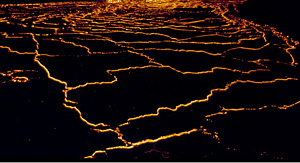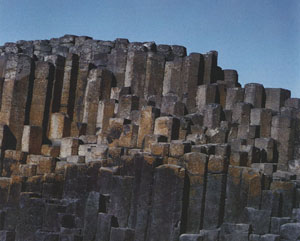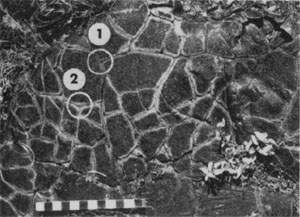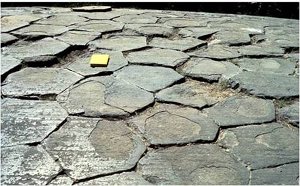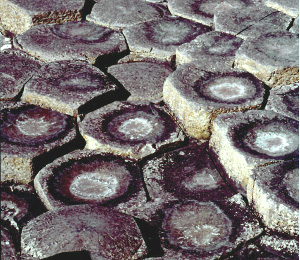| |||||||
|
|
|||||||
|
|
|||||||
| Columnar Joints | |||||||
|
Columnar joints form as a result of relative contraction due to cooling of a basaltic lava body (Figure 1) or drying of sediments such as mud and silt. These are generally referred to as thermal and desiccation fractures, respectively. Columnar joints divide rocks into prismatic columns (Figure 2) with commonly polygonal cross section geometry, varying from tetragonal or irregular patterns (Figure 1 and Figure 3) dominated by orthogonal intersections to ideally hexagonal cross sections with approximately 120 degree intersection angles (Figure 4 and Figure 5). Columnar joints are perfect for conceptualizing the temporal and spatial growth of joints because their driving stresses can be well constrained and their kinematics can be readily determined as described in the links entitled 'Growth of Columnar Joints' and 'Mechanisms and Mechanics of Thermal Fractures.' On the practical application side, there are some radioactive contamination sites in volcanic rocks such as the Hanford site, Washington, and the Snake River Plain, near the Idaho National Engineering and Environmental Laboratory, Idaho, in which columnar joints play an important role in groundwater and contaminant flow. There are also some reservoirs in volcanic rocks. Thermal fractures are also relevant to thermal recovery in energy extraction and oil shale production. | |||||||
| Reference: |
|||||||
| Aydin, A., DeGraff, J.M., 1988 Tomkeieff, S.I., 1940 |
|||||||
|
Readme | About Us | Acknowledgement | How to Cite | Terms of Use | Ⓒ Rock Fracture Knowledgebase |
|||||||
